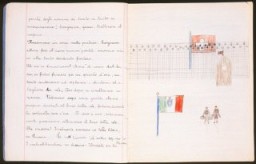You searched for: 信息流代全球竞价开户【TG飞机:@bapingseo】代谷歌竞价霸屏投放包上【TG电报:@bapingseo】库拉索霸屏优化【Telegram:@bapingseo】买彩票安全可靠软件通发老虎机杏耀登陆线路测速1真人现金下注平台官网?l9QBoS/728052.html
<< Previous | Displaying results 111-120 of 669 for "信息流代全球竞价开户【TG飞机:@bapingseo】代谷歌竞价霸屏投放包上【TG电报:@bapingseo】库拉索霸屏优化【Telegram:@bapingseo】买彩票安全可靠软件通发老虎机杏耀登陆线路测速1真人现金下注平台官网?l9QBoS/728052.html" | Next >>
-
Orphans arrive at a railroad station
PhotoJewish orphans arrive at the Marseille railroad station, en route to Palestine as part of postwar Brihah movement. Marseille, France, March 25, 1948.
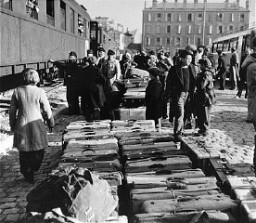
-
An interior designer imprisoned for homosexuality
PhotoInterior designer from Duesseldorf who was charged with homosexuality and imprisoned for 18 months. Duesseldorf, Germany, date uncertain.
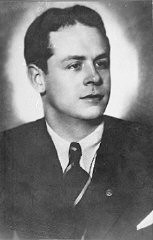
-
Advertisement for the Violetta women's club
DocumentA newspaper advertisement for the Damenklub Violetta, a Berlin club frequented by lesbians, 1928. Before the Nazis came to power in 1933, lesbian communities and networks flourished in Germany.

-
A Kripo agent's identifying warrant disc
ArtifactOfficial identification tag (warrant badge) for the Criminal Police (Kriminalpolizei or Kripo), the detective police force of Nazi Germany. These badges were generally suspended from a chain and included the officer's identification number on the reverse.
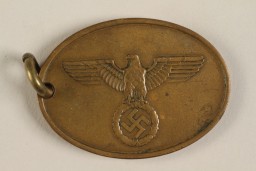
-
Reverse of a Kripo warrant disc listing the officer's number
ArtifactReverse of the official identification tag (warrant badge) for the Kriminalpolizei or Kripo, the detective police force of Nazi Germany. It reads Staatliche Kriminalpolizei (State Criminal Police) and identifies the officer's number as 8409.

-
The Times, August 17, 1921
ArtifactIn this London Times article, reporter Philip Graves compared passages from Maurice Joly’s Dialogue in Hell Between Machiavelli and Montesquieu (1864) side-by-side with the Protocols of the Elders of Zion in order to prove that the Protocols was plagiarized. Other investigations revealed that one chapter of a Prussian novel, Hermann Goedsche’s Biarritz (1868), also “inspired” the Protocols. Times (London), August 17, 1921.
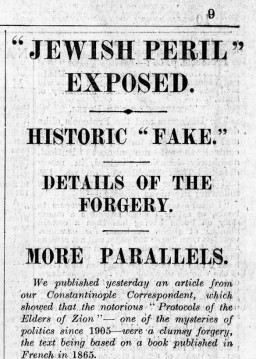
-
Demonstrating the operation of the Dachau crematorium
PhotoSurvivors of the Dachau concentration camp demonstrate the operation of the crematorium by preparing a corpse to be placed into one of the ovens. Dachau, Germany, April 29–May 10, 1945. This image is among the commonly reproduced and distributed, and often extremely graphic, images of liberation. These photographs provided powerful documentation of the crimes of the Nazi era.
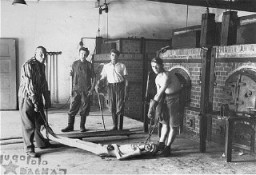
-
Sisters Eva and Liane Münzer
PhotoSisters Eva and Liane Münzer. They were placed in hiding with a devout Catholic couple. In 1944, Eva and Liane were reported to the police as a result of a fight between their rescuers. The husband denounced his wife and the two Jewish girls. The three were immediately arrested and sent to the Westerbork camp. On February 8, 1944, eight- and six-year-old Eva and Liane were deported to Auschwitz, where they were murdered. Photograph taken in The Hague, the Netherlands, 1940.
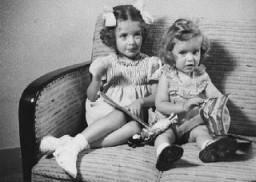
-
On the waiting list for American visas
DocumentSelmar and Elsa Biener joined the waiting list for US immigration visas in September 1938. Their waiting list numbers—45,685 and 45,686—indicate the number of people who had registered with the US consulate in Berlin. By September 1938, approximately 220,000 people throughout Germany, mostly Jews, were on the waiting list.
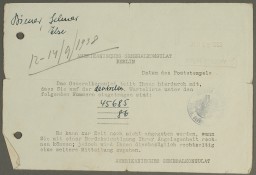
-
Pages from a child's diary
PhotoIllustrated page of a child's diary written in a Swiss refugee camp. The diary entry describes how they crossed the border into Switzerland. The text reads, "We came out of the woods and into a clearing: we had to be as quiet as possible because we were so close to the border. Oh! I almost forgot! Before we came out of the woods, they made us stand still for a quarter of an hour while they went to explore the area and to cut through the fence. Fortunately, shortly thereafter, we began to walk again. We saw…
